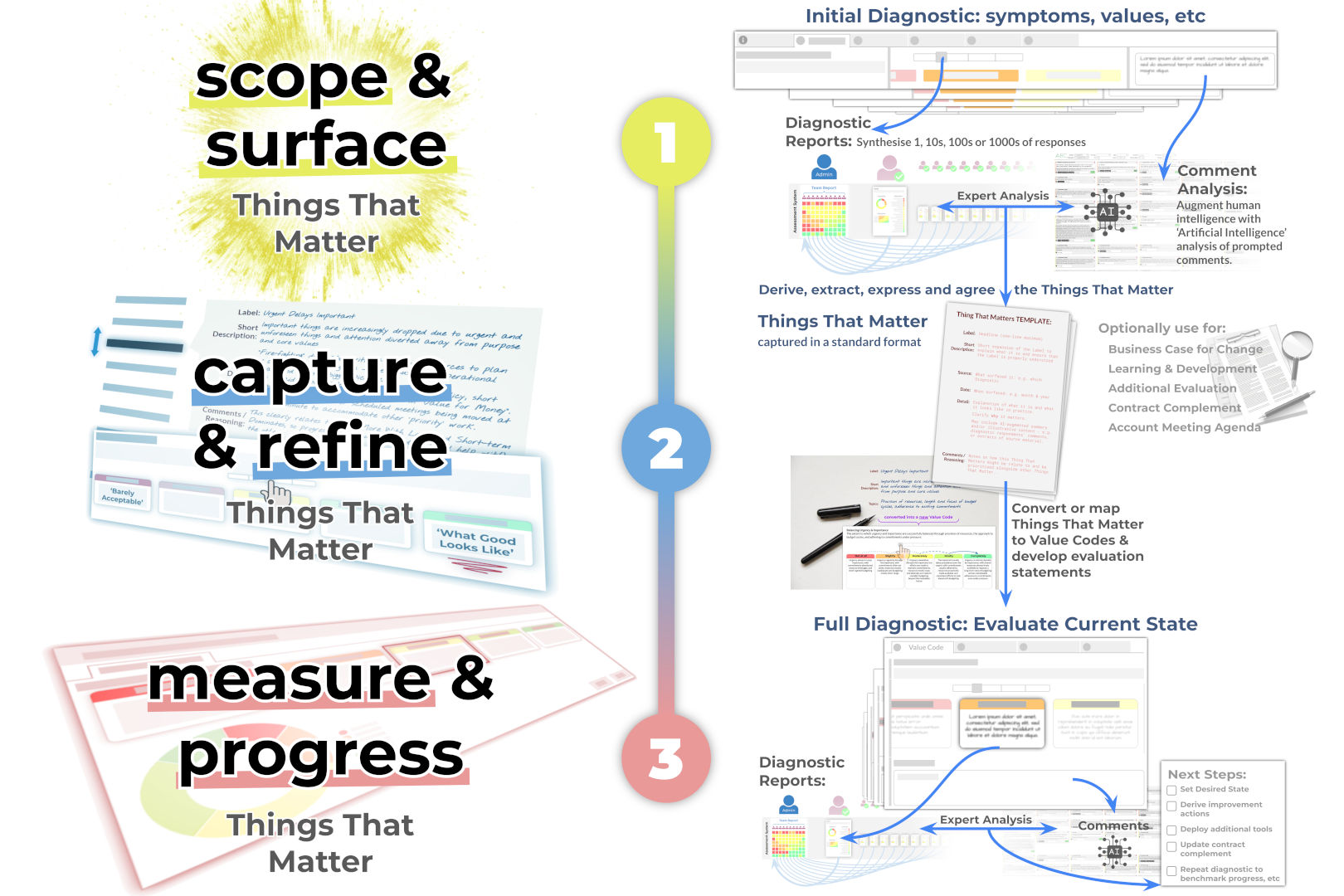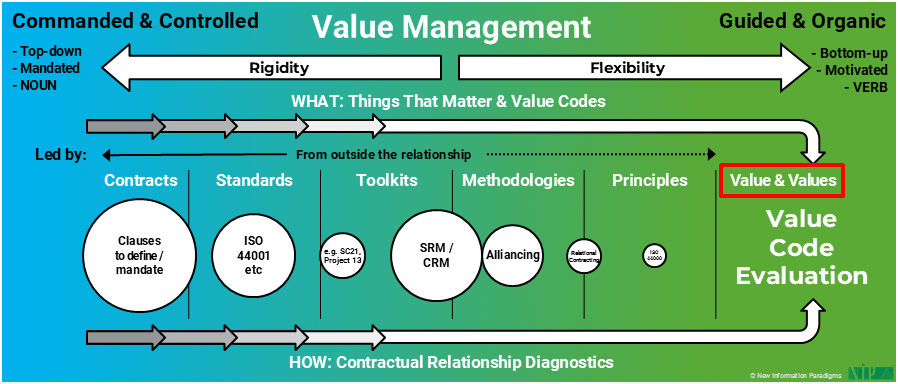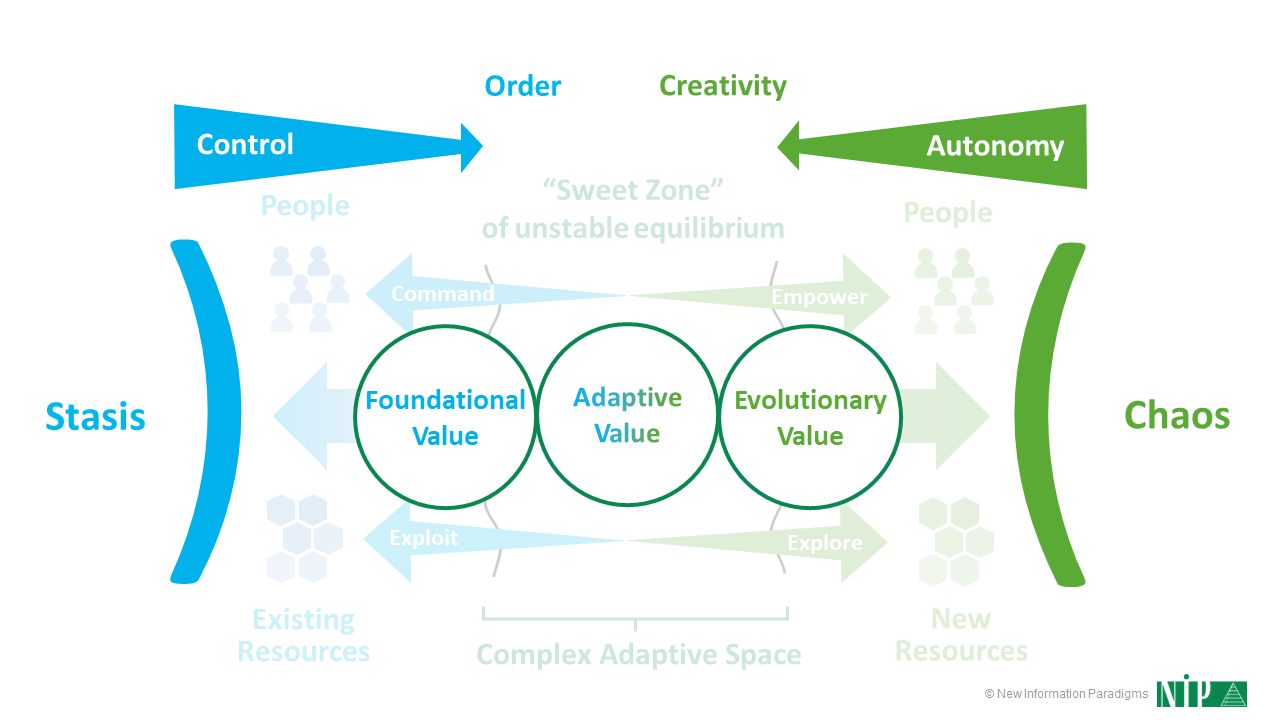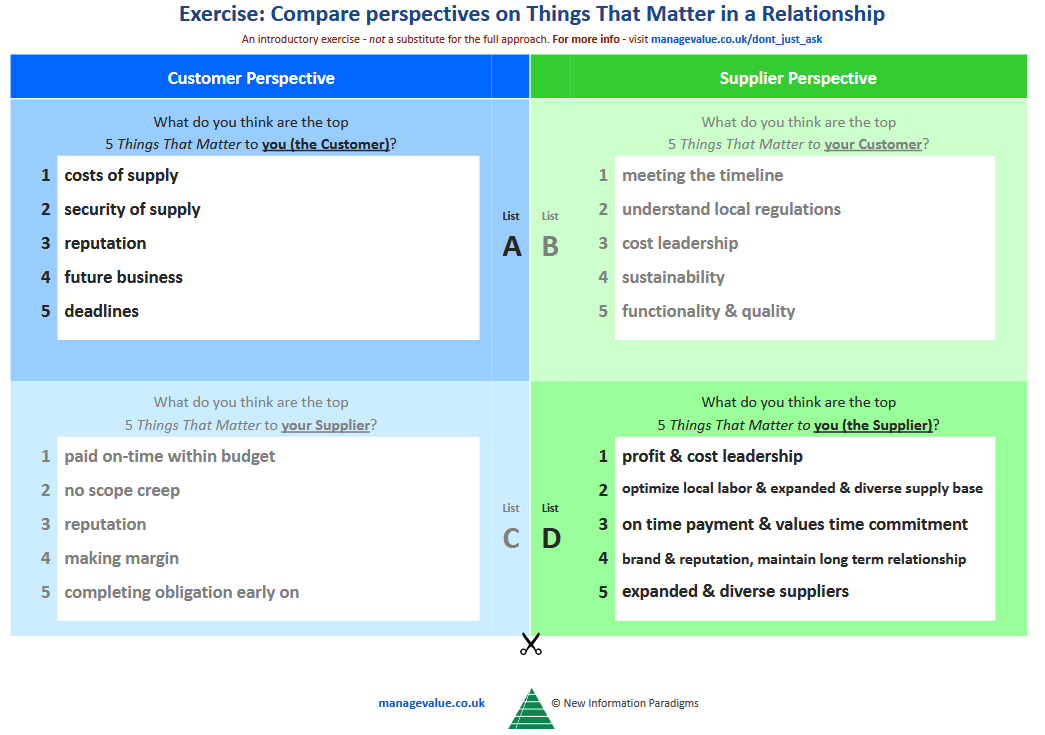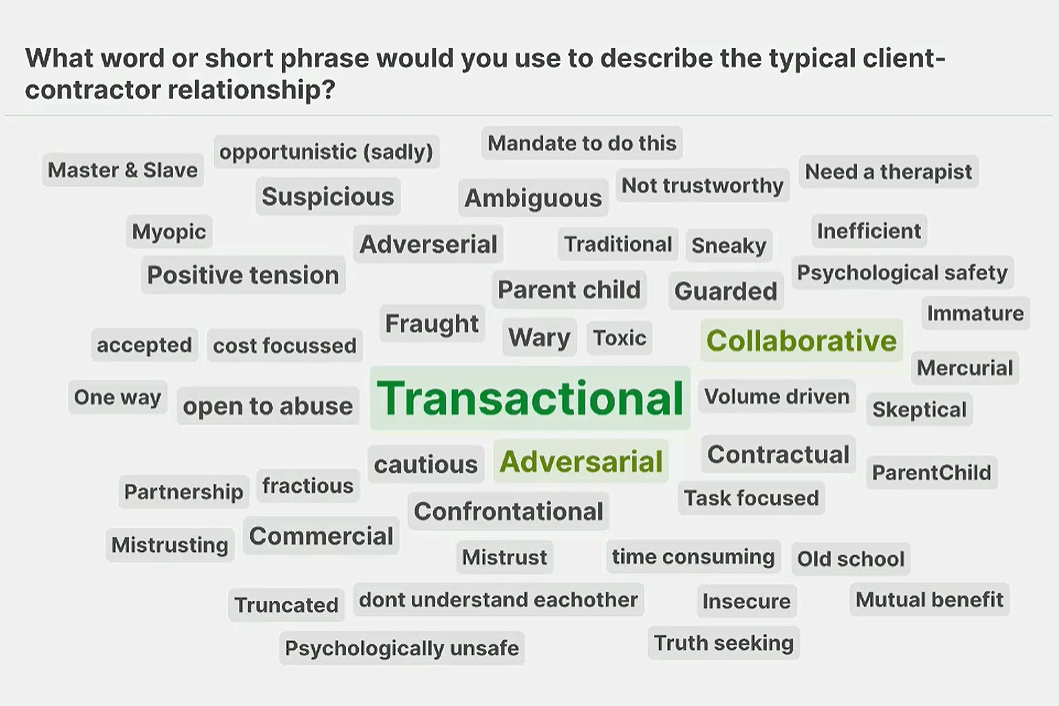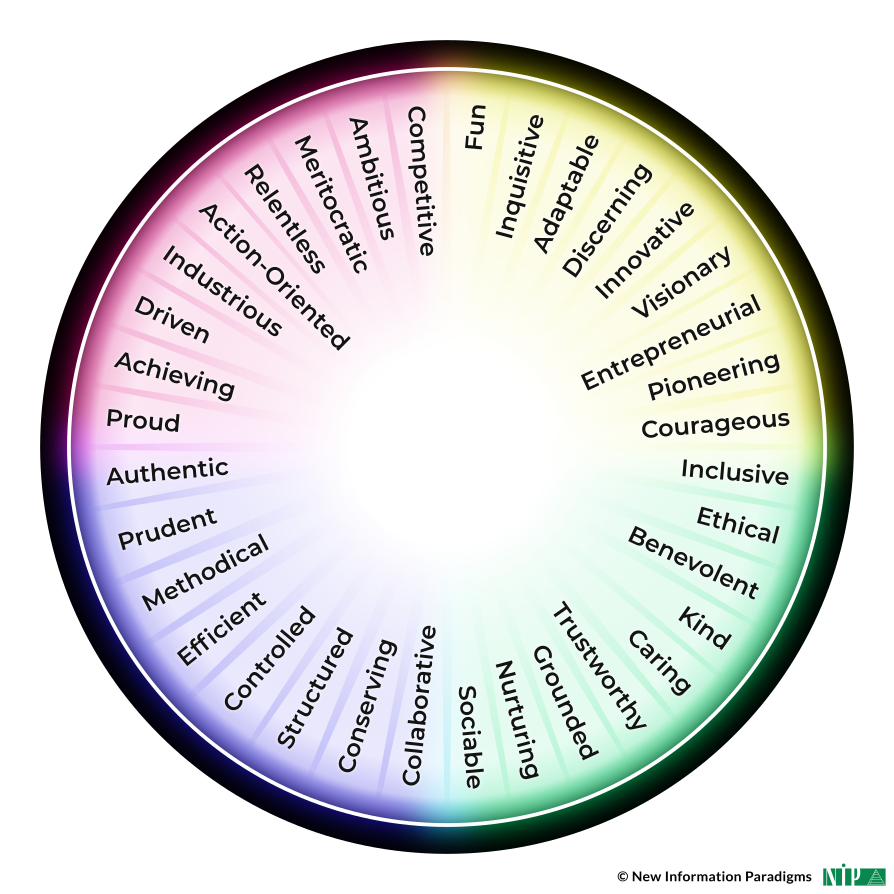Agile Supply Chain Research Club
Chris Vallé and Stephen Bruce spoke at Cranfield School of Management’s Agile Supply Chain Research Club, on 11th December 2024.
This page is intended as a resource for attendees (and for those people unable to attend on the day). We’ll update it with any topics or ‘Q&A’s that we weren’t able to cover in enough detail – so you may want to bookmark this page.


In the session, we explained that the ‘Contractual Relationship Diagnostic’ is one of the ways we recommend for people to begin to scope and surface, capture and refine, and to measure and progress things that matter.
We encourage you to see and feel the value of that diagnostic experience for yourself.
The link below allows you to register yourself and up to 6 others to diagnose the current state of a relationship that you each have a unique and valuable perspective of.
Contractual Relationship Diagnostic
Click the link and use the code TRIAL2024
for a complimentary team diagnostic for ASCRC.
More info on the diagnostic itself (with short video walk-through) here.
For supply chain professionals managing key supplier relationships, who need to evaluate the performance of critical but often overlooked aspects of supplier relationships to gain actionable insights and improve collaboration, the Contractual Relationship Diagnostic focuses attention on things that matter, providing a clear, objective evaluation framework that is adaptable and scalable across the entire supply chain.
To get the most value out of the complimentary diagnostic evaluation:
- Identify a specific relationship and remember you’re evaluating that relationship (you’re not evaluating the other party or ‘relationships overall’).
- Include people familiar with that specific relationship (ideally spanning different roles).
- Evaluate based on your own perspective (don’t try to anticipate the perspective of the other party… not yet).
- Remember you’re initially evaluating the ‘current state’ – not a desired or ideal future state (plenty of scope to do that later).
Selected content related to the session
Contractual Relationship Diagnostic
Contracts are an indispensable tool in commercial relationships, providing crucial legal and operational detail. However, there is an increasing awareness of the limitations of contracts. Most basically, for non-legal people, contracts usually aren’t easy to understand, leading to practical challenges…
Complexity-Aware
“Complexity” and “complex” are much-used terms – typically as synonyms for things that are difficult and involve lots of elements. And, yes, Complexity is difficult and does involve lots of elements. But this is a woefully incomplete definition and understanding….
Failed Approaches
The responses most organisations are making to the challenges of today’s commercial environment can be summarised as: Doubling-down – more of the same; Short cuts – looking for quick fixes; “Long” cuts – investments to pay off later. In many…
Three Steps to Value
Value Management achieves transformational and demonstrable results through engagement, motivation and change. As this video playlist shows, Value Management begins with three straightforward but profound steps – scoping & surfacing, capturing & refining and measuring & progressing the Things That…
Value Coding
Value Coding is the process by which the (mostly subjective) Things That Matter are re-expressed in ways – Value Codes – that make them objectively measurable and manageable. Derived from – or related to – one or more of the…
People-Centred
Whether it’s McKinsey, Deloitte, or any number of other sources, people are rightly understood to be a key resource – even the key resource. Diversity, recruitment, retention, wellbeing, morale and culture are all high up the list of priorities for…
Fixing Strategic Relationships
Existing approaches aren’t working in the face of today’s complexity. However, for those that are brave enough to break with the status quo, there is a new alternative approach: Value Management. Value Management begins with three straightforward but profound steps…
Things That Matter
Establishing, focusing-on and delivering-on the Things That Matter is at the core of Value Management. Does that sound simple? It’s not. Surely it’s what everyone is already doing? It’s not. To understand why, we need to look at: What we…
Selected articles related to the session
Understanding Diagnostics – don’t confuse them with surveys…
People typically don’t understand what a Diagnostic is. They then get all kinds of things wrong – especially in the conclusions they draw from them – and miss out significantly…
Value Management: How to Avoid Being Overwhelmed
If they don’t realize it already, they will soon: anyone engaged in relationships is becoming overwhelmed by the difficulties and Complexity of decisions and trade-offs. Experience-based intuition currently bridges the…
Empathy: the Missing Piece of the Collaboration Puzzle
Commercial relationships are struggling, and nowhere is this more true than in collaborative relationships. Such relationships are where Complexity – from both inside and outside the relationship – is highest,…
Value Management: How and Why It Works
Part of the beauty of Value Management is that it just works. But how does it work? And why does it work? Because it is built on the…
Misalignment on Things That Matter: Proving the Point
The Things That Matter aren’t clear or aligned in our relationships. This missing empathy is what is inhibiting understanding, preventing the management of differences, and hampering authentic collaboration. All of…
Relationships: The Will May Be There… But The Way Isn’t
In our latest webinar on the Things That Matter, polls demonstrated that the will to understand partners may be there, but the way isn’t. Well-intended personal contact tries and fails…
Just Asking About Things That Matter: Necessary but not Sufficient
When people begin grasping the significance of Things That Matter, they often rush to pop the “what matters to you?” question to colleagues and counterparts. That’s a great start and…
Things That Matter: the Only Bedrock That Works
Part of the beauty of “Things That Matter” is the simplicity of the phrase. Everyone just “knows” what it means and can powerfully engage without deeper reflection. But what is…
Value Management: SMARTER than SMART
Most of us are probably familiar with the concept of SMART goals. Value Management not only encapsulates SMART, but takes it further in three ways: meeting the challenge of Measurability,…
Value Management: Why Symptoms Aren’t “Negative”
Whilst there are exceptions, we generally recommend our Symptoms of What’s Not Working Diagnostic as the starting point for engaging with Value Management. Here, we explain why, and how -…
Great Expectations: What Happens When Reality Bites?
At best, just over a third of initiatives end up truly succeeding, and even this is probably over-optimistic; the rest only achieve marginal gains or fail altogether. This all follows…
Value Management: What’s in a Logo?
Our logo hasn’t changed in 35 years, and it shows a triangle with six levels, with a line running through all of them. This describes everything we were founded to…
Describing Things That Matter
Things That Matter is the foundational element of Value Management. But what goes into a Thing That Matters and how do you use them? Here, we find out….
Defining Value Vectors
We have developed a “Value Vectors Diagnostic”, but what is a “value vector”? Where do they come from? And how can they be understood and used?…
Mastering Complexity: Introduction
Despite being what defines our world and how it works, Complexity is all too often misunderstood. This introduction to our series on Complexity explains why this matters and what we’ve…





